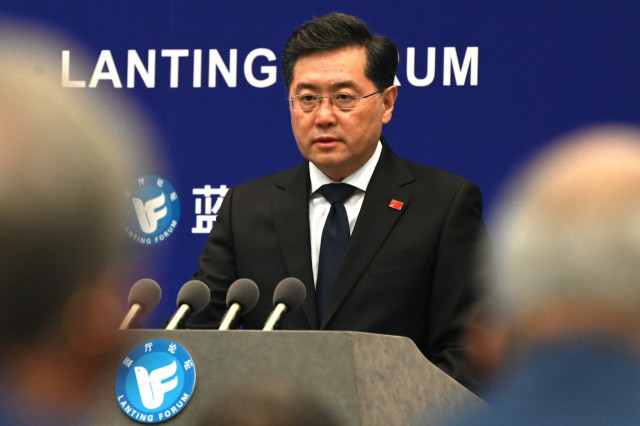Cyberbullying in Higher Education in the Digital Age

- Phearun Chhoeurm
- December 24, 2020 8:57 AM
Bullying is defined as an offensive action or hostile behaviour done by an individual or a group with the intention to harm another person (Gladden, 2014; Olweus, 1994). In the Web 2.0 era, networking technology has moved to the internet and integrated into education, posing a new challenge known as cyberbullying (Sellers et al., 2009). Since then, traditional bullying has gradually transformed into online bullying.
In recent years, cyberbullying has become a modern form of harassment (Watts et al., 2017). According to Smith et al. (2008), cyberbullying is the act of using electronic communication devices such as computers, smartphones, and the internet to humiliate weaker individuals. Similarly, this term is defined as an intentional action that inflicts harm on someone on the internet by using mobile phones and other digital devices to send instant messages or threats (National Crime Prevention Council, 2010).
In today’s world, information and communication technology (ICT) has been increasingly integrated into higher education for the sake of educational acceleration (Faucher et al., 2014). Teachers and students have started to use a wide range of technological tools as platforms for teaching, learning, social networking, accessing email, sharing information, and texting. Sticca and Perren (2013) argued that internet utilization in education would accelerate educational activities and provide convenient platforms for educators and learners; however, the rapid transformation of face-to-face to cyberbullying poses significant threats to internet users.
Cyber victims are not only students from pre-primary but also higher education levels (Smith et al., 2014). A study by Slonje and Smith (2008) found that the phenomenon of cyberbullying among university students has become a complicated issue.
Cyberbullying Among Students in Higher Education
The widespread use of ICT and the rapid adoption of social media has put students at high risk of cyberbullying. Zalaquett and Chatters (2014) showed that over 80% of 613 college students used the internet, while 95% of them used social media, including Facebook and so forth.
The study results indicated that approximately 19% of those students were victims of different forms of cyberbullying, such as sexual and gender harassment, racism, and classism (class discrimination). In addition, Dilmac (2009) surveyed 666 college students in Turkey and found that 22% of them experienced cyberbullying.
The reason behind this issue is that students lacked digital competency and those who found it hard to adapt to technology-based education settings were the most vulnerable to cyberbullying (Didden et al., 2009).
In Cambodia, among the 16 million Cambodians, 11 million of them use the internet and 7 million use social media (VOA, 2017). A survey on one million youth across 160 countries, including Cambodia, by the United Nations International Children’s Emergency Fund (UNICEF, 2019) showed that 85.7% of young Cambodians between the ages of 15 and 25 years were digitally bullied and harassed.
The rapid growth of social media use among Cambodian students has created another burden on the government in maintaining cybersecurity and accelerating digital education nationwide. Unfortunately, not many studies have been conducted on cyberbullying facing Cambodian university students; therefore, it is hard to find data and concrete evidence to address such an issue.
Apart from Cambodia, researchers worldwide have conducted some studies on cyberbullying among college students, focusing on gender-based differences. As a result of studies, females were significantly more likely to be cyberbullied than males (Wang et al., 2009).
However, a previous study found that males were more likely to be cyberbullies and cyber victims than females (Akbulut & Eristi, 2011). A recent study shows that cyberbullying vulnerability is still greater for females than males (Faucher et al., 2014).
Globally, a vast majority of cyber victims share similar problems, although they are threatened by different forms of online bullying. According to Sellers et al. (2009), some individuals humiliate another person on the internet through emailing, social networking, messaging, sending lies, or posting inappropriate photos.
For example, a study by Faucher et al. (2014) about victims experiencing cyberbullying on Facebook showed that 34% of 1391 students (Facebook users) from Canadian universities unfriended their boyfriend or girlfriend after a breakup and 12% of them said they were harassed or bullied online.
Consequently, cyberbullying has caused anxiety, depression, stress, low self-esteem, and other psychological problems, resulting in a loss of students’ motivation and decline in academic performance (Bond et al., 2001). Zalaquett and Chatters (2014) surveyed 613 college students and showed that 32% of the victims developed more stress due to digital abuse, while 9% experienced a loss of productivity. Also, serious cyberbullying behaviour can encourage victims to develop suicidal thoughts or even commit suicide (Hinduja & Patchin, 2010).
Recently, the increase of cyberbullying in higher education amid the Covid-19 pandemic is another emerging issue facing education sectors worldwide. Physical classes have been temporarily shifted online, posing unprecedented burdens, anxieties, and stress on students. Simultaneously, college students have been bullied on social media, especially regarding racism.
According to Florida Atlantic University (2020), racism on the internet and in-person has risen among students during the virus outbreak. In two weeks during the global pandemic, over 1,100 reports were received. Most of these statements were from ASEAN college students, who have been discriminated against and bullied physically and virtually (Asian Pacific Policy and Planning Council & Chinese for Affirmative Action, 2020).
Suggestions and Concluding Remarks
Several studies suggest insightful and critical solutions to address cyberbullying and provide guidelines for further studies on this issue. A study of 1704 primary and secondary students by Giménez-Gualdo et al. (2018) found that only 0.03% of cyberbullied students reported to the counsellors at their schools. Thus, educational institutions at all levels should strongly encourage victims of cyberbullying to bravely report incidents to the counsellors of their schools or universities
In Cambodia, cyberbullying is a growing concern in higher education especially during a global pandemic since teachers and students lack digital competency and technology-based skills. Digital security and safety should be strengthened to prevent Cambodian educators and learners from cyberbullying (Rath, 2020, p. 92).
Thus, educational institutions should establish relevant policy initiatives and strengthen existing anti-cyberbullying strategies while providing counselling services and sustained support for victims of cyberbullying.
Education on cyberbullying should be integrated with the academic programs to equip students with an in-depth awareness of this issue. At the same time, cyberbullying-related laws and policies should be taught effectively and highly promoted.
Moreover, both teachers and students should be provided with additional training on cyberbullying prevention and digital literacy skills (Faucher et al., 2014).
In the Industry 4.0 era, heavy internet use among adolescents has remarkably increased, leading to the growth of cyberbullying-related behaviour (Walrave & Heirman, 2011). However, cyberbullying is also a key concern for people of all ages (Akbulut & Eristi, 2011). Olweus (2012) stated that not many research studies on cyberbullying have been conducted.
In the case of Cambodia, research on cyberbullying, particularly in higher education, seem to be very limited. For this reason, the government and educational institutions should support and encourage researchers to conduct in-depth research on cyberbullying to understand this phenomenon and find ways to transform Cambodia into a safe kingdom in the digital age.
Phearun Chhoeurm is an intern at Cambodian Education Forum. He is a senior student pursuing Bachelor’s degrees in Professional Communication and Tourism Management in the Department of English, Royal University of Phnom Penh and the Tony Fernandes School of Business, the University of Cambodia, respectively. Currently, he is also a selected Cambodian Student Ambassador at STEP Sociovation Forum in Singapore.
This article was originally published by Cambodian Education Forum on December 14, 2020.















